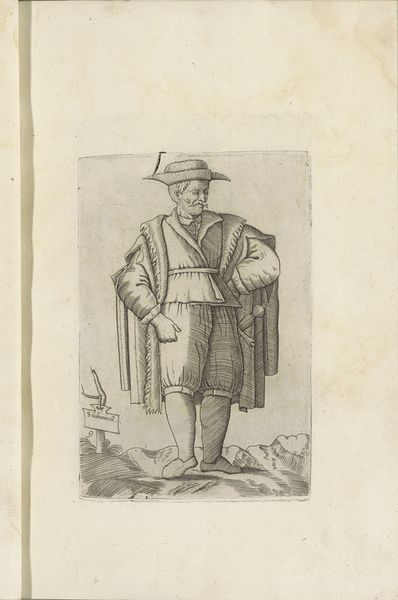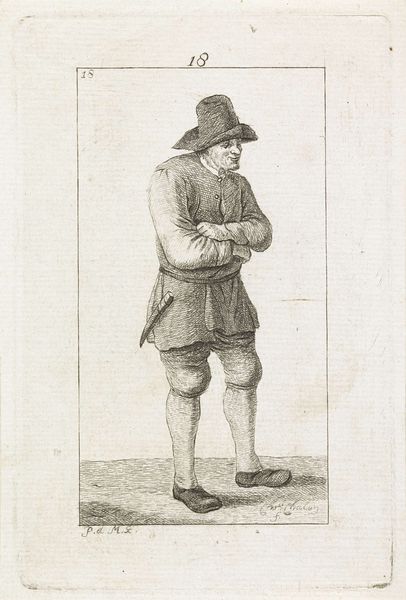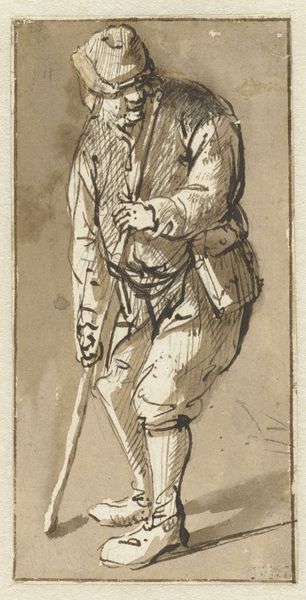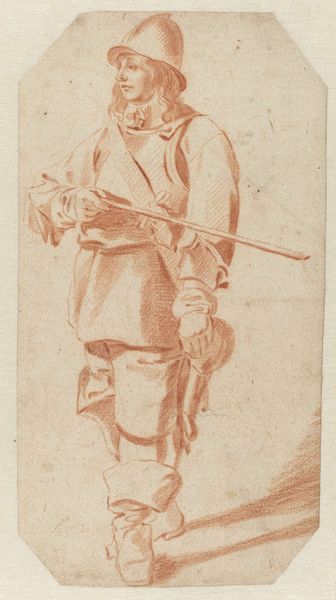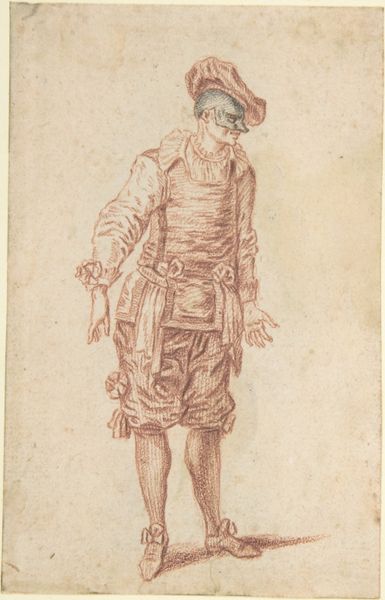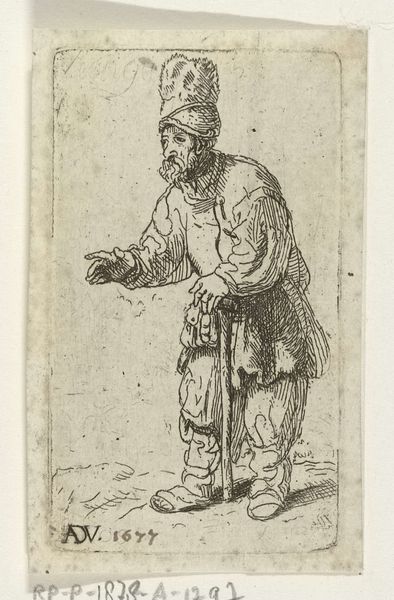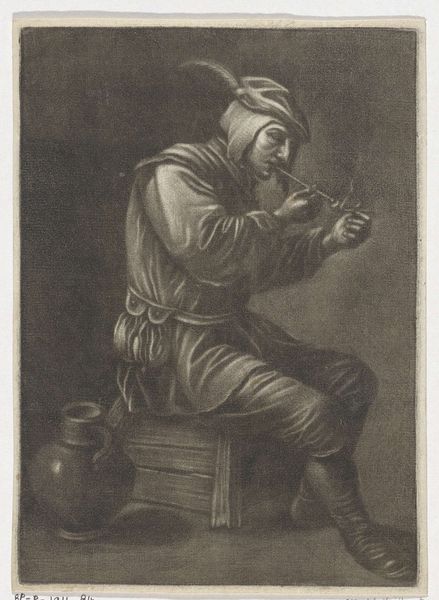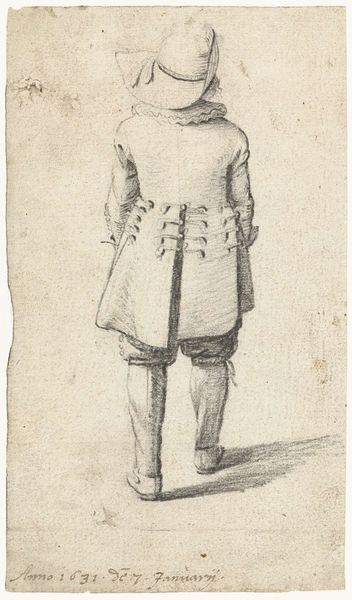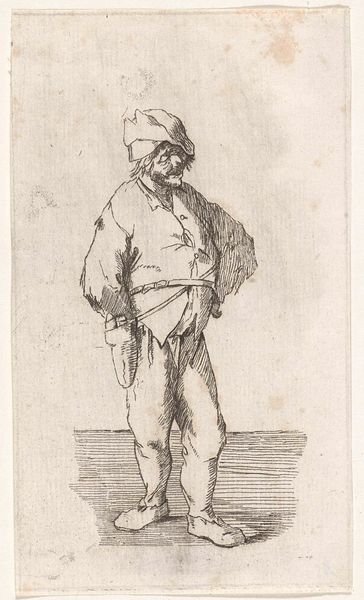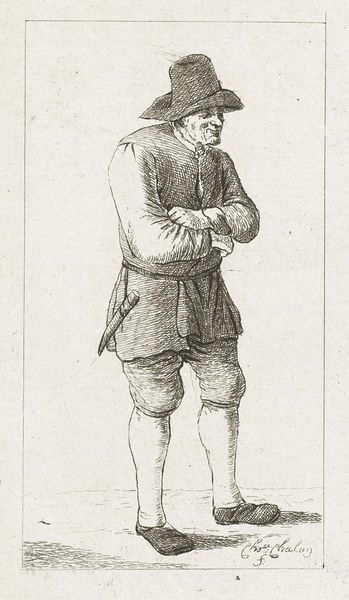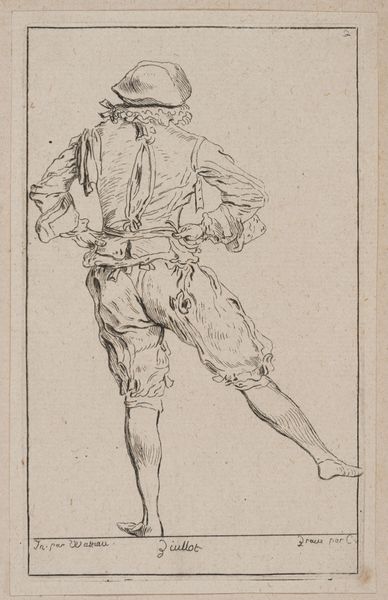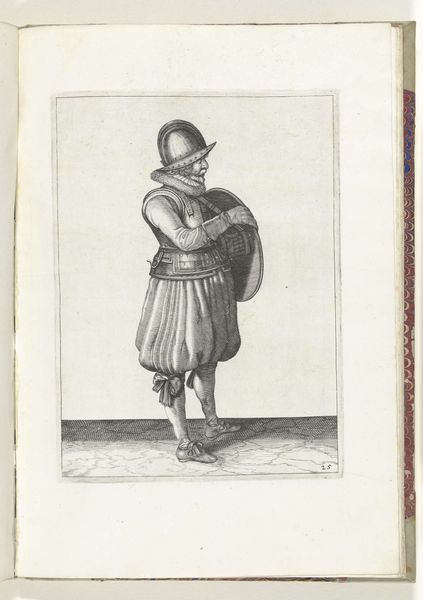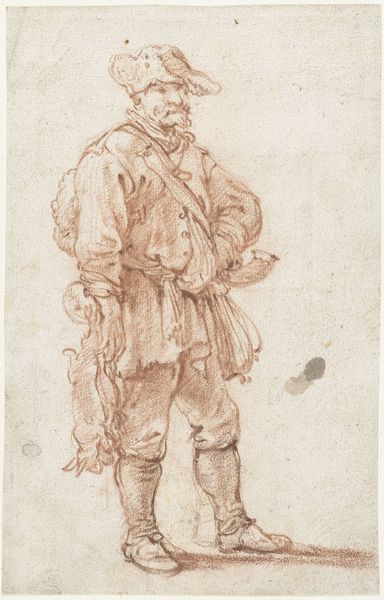
drawing, pencil
#
drawing
#
neoclacissism
#
aged paper
#
toned paper
#
light pencil work
#
pencil sketch
#
sketch book
#
personal sketchbook
#
pencil
#
sketchbook drawing
#
pencil work
#
genre-painting
#
storyboard and sketchbook work
#
sketchbook art
Dimensions: height 85 mm, width 50 mm
Copyright: Rijks Museum: Open Domain
Curator: Before us we have "Zittende man," or "Seated Man," a pencil drawing on toned paper attributed to Abraham Delfos, created sometime between 1741 and 1820. It's part of the Rijksmuseum's collection. What are your initial thoughts? Editor: Well, it strikes me immediately as a study in textures. The paper itself looks aged and the pencil work has an airy, almost translucent quality. Look how the light catches the folds of his clothing. Curator: The clothing provides crucial context. His garb suggests he's a member of the working class, a man perhaps engaged in agricultural labor. Consider how depictions of laboring bodies often reflect and reinforce existing social hierarchies. This may be less of a portrait and more of a statement of the society that was in place in this era. Editor: I appreciate your point. Yet, let’s look at the artist’s mark-making. The diagonal hatching to create shadow, the varying pressure of the pencil. It’s almost like watching Delfos thinking on paper. The composition focuses us on the interplay of light and dark, of shape and line. There's even a faint grid underneath, likely a preparation tool. Curator: Precisely! This is not just about lines and forms; it is a capture of how social classes interact with this era of Neoclassicism and the revolution of representation within artistic themes. We are looking at the rise of interest in Genre-Painting that helped propel artistic value and cultural growth by the common individual. The sketchbook format of Delfos places "Zittende man" into a position to inform art of that time period of daily human life. Editor: Perhaps, and there's certainly a stillness that contrasts with potential social interpretations. The sitter is relaxed, content even. The lines don't communicate unrest, instead communicate an unforced moment in time captured for analysis. Curator: Perhaps we are looking at both sides. Delfos uses form and the reality of his time to project humanity. Thank you for illuminating his work, it does indeed need deeper thought to fully appreciate. Editor: Agreed! The piece certainly gives us a lot to reflect upon when it comes to art analysis.
Comments
No comments
Be the first to comment and join the conversation on the ultimate creative platform.
